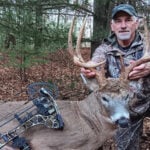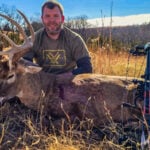“Everyone has a plan until they get punched in the mouth.” Mike Tyson.
Bowhunters are perpetual optimists. It’s the nature of the die-hard bowhunter, but so is soldiering forward even when success seems out of reach. Too often I encounter bowhunters who, because of a few trail-cam photos or an especially fruitful scouting trip, declare success inevitable. But then opening day was a bust…now what? Do you have a solid Plan B?
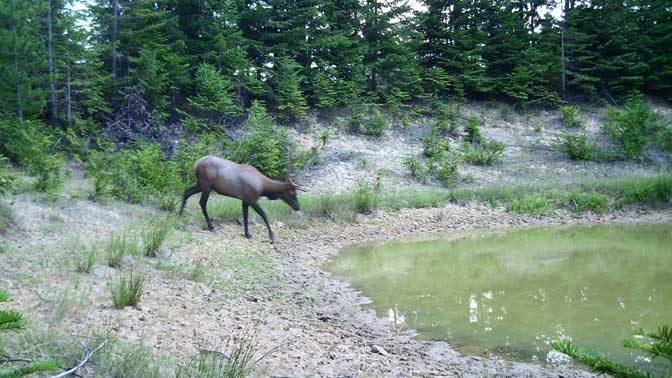
Trail cam photos show that elk are in your area, but what if conditions change? Do you have a solid Plan B?
I count myself among the guilty. This year, for instance, we experienced an especially dry summer. Animals were hitting water like crazy. Not only did I have three 5×5 whitetail bucks scoring 150 or better appearing regularly on trail cameras, but a gorgeous 6×6 and wild-looking 5×5 with monster rear forks that might’ve scored 300 inches. I thought I had the season wired. But the drought continued, fires broke out, and the forest I hunt close to home was suddenly closed to the public. Then is rained, and the forest reopened, but also put a damper on water-hole action. Back to square one…
Mostly, though, I see this play out in regards to the approach elk hunters want badly to work for them. I once lived in the Southwest, where water-holes were productive no matter the year. I knew guys who were so dependent on water for success if a place came under dispute by another hunter they were ready to go to the wall over possession. Fists fights became commonplace and wet weather often simply shut down the dream of an easy trophy bull.
The same can be said of calling. There are a lot of elk hunters who depend on little else but calling to get shots at bulls. They’ve been watching too many elk-hunting DVDs, where private-land bulls from the best elk habitat in North America obediently come into aggressive bugling and “fighting-cow” calls. They somehow think the same thing is going to happen to them on the hard-hunted public lands they’re limited to. They never stop to realize that by calling belligerently to hard-hunted bulls they are literally blowing any opportunity of success they might have enjoyed had they gone about things a little differently; namely more conservatively.
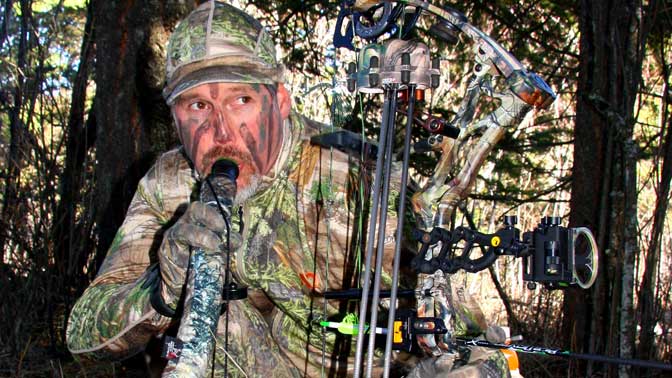
Despite what you may see on TV, calling elk on public land is a different game. Less calling and more stealth typically will help tip the odds in your favor.
And then there are years when you just can’t depend on bugling in general, much less bulls in the heat of the rut willing to risk bodily harm to pick a fight. Blame it on global warming or El Nino or sun flairs, but if you hunt elk long enough you will encounter those years when unseasonably hot weather, unexpected hunting pressure or any other number of unforeseen scenarios simply turns bulls tight lipped. Calling in a mature bull under such circumstances is obviously a non-starter, but this can throttle even dogging efforts (wherein hunters use a bull’s bugles to keep track of him, follow him, and attempt to close the distance through pure stealth).
My point is that elk hunting is multidimensional, especially on the public lands most of us get to hunt regularly—you know, places where obtaining tags doesn’t resemble a Power Ball Lottery, or where outfitters or trespass fees aren’t involved. The most consistently successful public-lands bowhunters take to the field with a deep bag of tricks and a willingness to hike farther and stay longer.
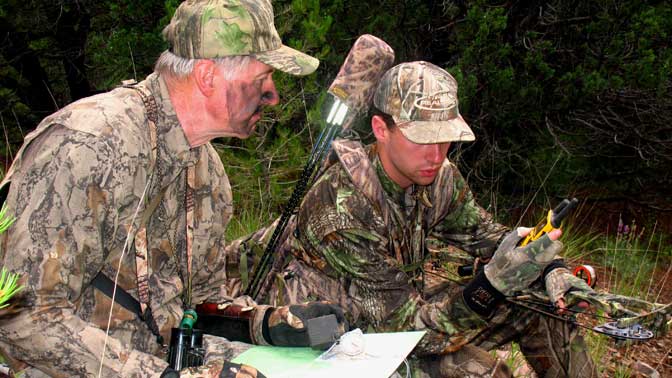
You better know how to navigate the backcountry when searching for a Plan B bull.
Too much rain—too much water in general—making water-hole hunting a losing proposition? Every conceivable watering site or wallow already staked out by other hunters? Try stalking instead. Too many hunters blowing on too many calls have area bulls spooky as a suburban whitetail? Use a bull’s bugles to help close the distance. Hot weather delaying the rut altogether, with nary a bugle heard after a week of hunting? Climb a vantage and put optics to work for you, just like you do while pursuing mule deer. Maybe still-hunting thick black timber is the answer. Or maybe you need to borrow a page from the whitetail hunter’s playbook and allow all that hoopla caused by the competition to move elk past a blind or stand situated in funneling topography.
And that’s just the start of it. I see too many hunters give up on an elk hunt because the sure-fire spots they’ve scouted diligently before season or have been hunting for years are overrun with other hunters, or an area rancher has moved his cattle in the area in preparation for winter pasturing and displaced all those elk seen during scouting. This is another area where elk hunters must remain flexible. Living in the middle of logging country I must deal with this nearly every year, returning after an off season to find one of my favorite elk spots turned to stumps and logging skids. The adaptable elk hunter never rests on his laurels, always seeking new places, pouring over maps, and wandering if that blank spot of green ink might represent the next elk hotspot. The savvy elk hunter, finding his elk honeyhole inconceivably empty, deciphers why this is the case and where and why he might find elk in another location. This generally revolves around hunting, ranching, logging, fire, or weather activity.
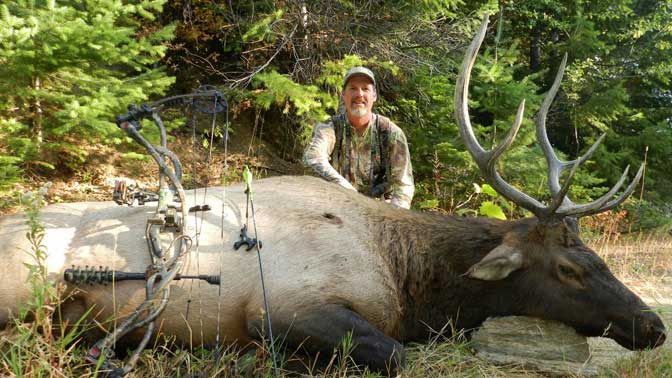
The author found success on this bull after moving to Plan B.
When hunting pressure is intense, find places other hunters have overlooked, or are too lazy to trek into. When you find your area flooded with cattle, look for fresh pastures where the grass is literally greener. Logging or fire turned your favorite ridge into moonscape? Look at the big picture and see if you can determine where those elk might have relocated. Wet years, dry spells and the like also have the ability to move elk around. The key to finding those elk again is determining how those conditions have influenced elk movement. If they’re not high, look low, and vice versa.
The modern elk hunter must remain open to change. Match approaches to the conditions at hand, and be willing to look for elk in new areas and keep looking during open season. Elk are extremely mobile, here one day, gone the next. The successful elk hunter creates success by trying new techniques until something works and staying on the move until he catches up with nomadic elk.

 By
By 